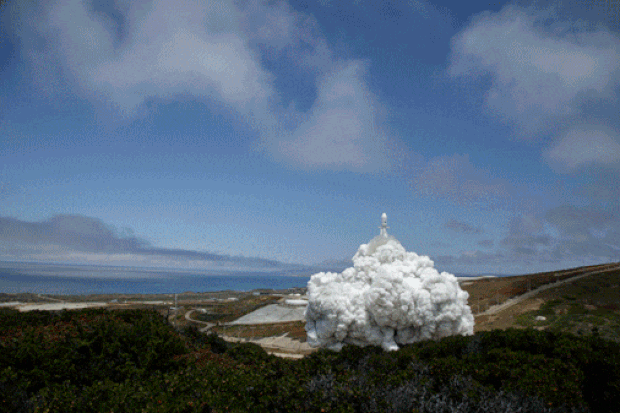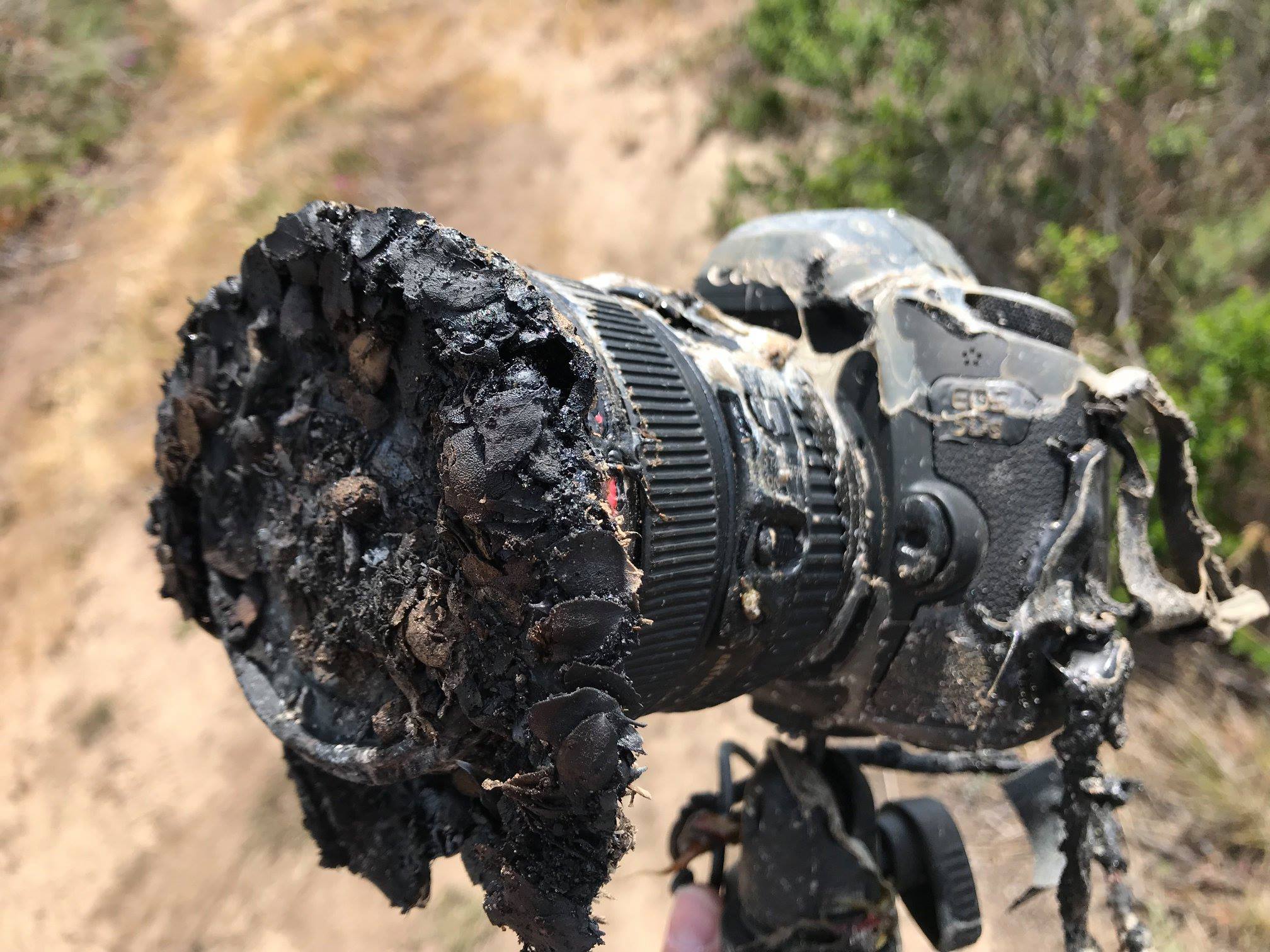Here's What NASA's 'Toasty' Camera Saw As It Melted After a SpaceX Launch

When a SpaceX rocket launches, it's awesome. But when a SpaceX rocket launch sparks a brush fire that melts a NASA photographer's camera, it goes viral. And that's just what happened to NASA photographer Bill Ingalls this week when he shared a photo of his charred camera after it met a fiery doom.
Now, you can see exactly how Ingalls' camera got roasted, in an animated NASA clip using images from the camera itself. The clip shows SpaceX's Falcon 9 launching two NASA satellites and five commercial satellites from Vandenberg Air Force Base in California on Tuesday (May 22).
The next day, Ingalls shared photos of the melted camera, known as a remote, on Facebook. One showed a launch photo taken by the camera; in the next image, flames lick at the lens, and finally, you see the charred, bubbled remains of the camera. Not surprisingly, the photos went viral across Twitter and other social media platforms. [See more awesome photos of SpaceX's launch]

But many folks got it wrong, suggesting that — like the mythical Icarus flying too close to the sun — Ingalls must have placed his camera too close to the rocket and got burned. But that's not what happened.
As Ingalls told Space.com Wednesday, the camera was a quarter mile from the launchpad and outside a safety perimeter. It was a grass fire sparked by the Falcon 9's launch that burned the camera. Its memory card survived, and today NASA unveiled a short video animation of the fire's ominous approach.
"I had six remotes: two outside the launch pad safety perimeter and four inside," Ingalls said in a NASA statement accompanying the new clip. "Unfortunately, the launch started a grass fire that toasted one of the cameras outside the perimeter."
Ingalls also shared a photo of the camera as it was set up. The camera's view looked across uneven terrain covered in vegetation and was mounted on a tripod secured in the ground by spikes.
Sign up for the Live Science daily newsletter now
Get the world’s most fascinating discoveries delivered straight to your inbox.
"Once the fire reached the camera, it was quickly engulfed. The body started to melt," NASA officials wrote in the statement. "When Ingalls returned to the site, firefighters were waiting to greet him. Recognizing the camera was destroyed, Ingalls forced open the body to see if its memory card could be salvaged. It could, which is how we can see the fire approaching the camera."
One weird fact: Of the cameras Ingalls set up, the melted camera was the farthest from SpaceX's launchpad. Four other remote cameras photographed the launch from inside the safety perimeter, and one more captured the view outside it. All five were undamaged.
Ingalls has been snapping photos for NASA for nearly 30 years. He told Space.com that, in all that time, this was the first camera he's ever had melted by a launch.
NASA officials said the "toasty" camera (as Ingalls calls it) will eventually be placed on display at the agency's headquarters in Washington, D.C.
As for Ingalls, he's headed to Kazakhstan soon to photograph the June 3 landing of the International Space Station's Expedition 55 crew.
"He expects that will be a completely normal assignment," NASA officials said.
Email Tariq Malik at tmalik@space.com or follow him @tariqjmalik. Follow us @Spacedotcom, Facebook and Google+. Original article on Space.com.

Tariq is the editor-in-chief of Live Science's sister site Space.com. He joined the team in 2001 as a staff writer, and later editor, focusing on human spaceflight, exploration and space science. Before joining Space.com, Tariq was a staff reporter for The Los Angeles Times, covering education and city beats in La Habra, Fullerton and Huntington Beach. He is also an Eagle Scout (yes, he has the Space Exploration merit badge) and went to Space Camp four times. He has journalism degrees from the University of Southern California and New York University.










